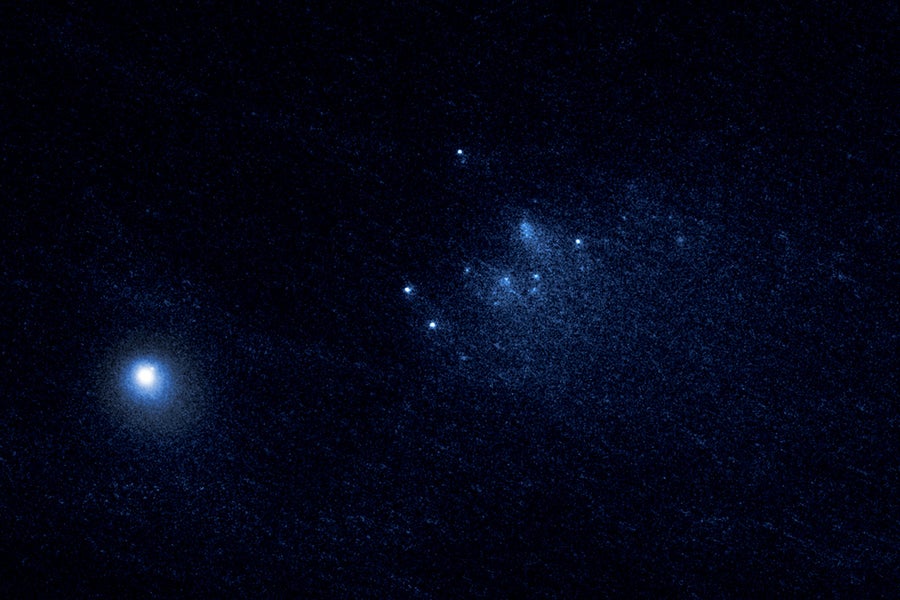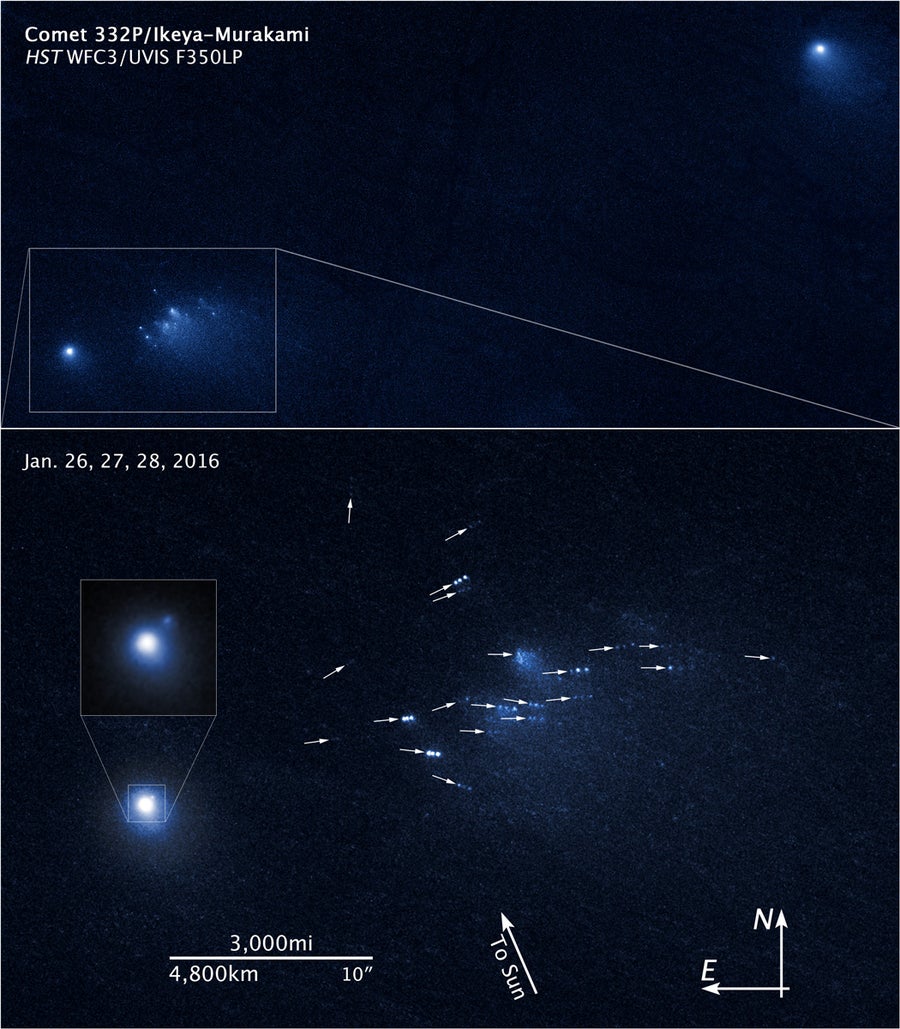This article was published in Scientific American’s former blog network and reflects the views of the author, not necessarily those of Scientific American
Do cometary nuclei eventually turn into dry dark husks, or do they break into smaller and smaller fragments?
The precise history and evolution of the dust and ice-rich bodies that we associate with comets is still unclear. But a recently released set of images from the Hubble Space Telescope provide one of the clearest views of one possible fate for cometary nuclei as they approach the sun.
Taken in January 2016, the data show a remarkable swarm of debris from the nucleus of comet 332P/Ikeya-Murakami. At this point the comet was about 150 million miles from the sun, on an approach course.
On supporting science journalism
If you're enjoying this article, consider supporting our award-winning journalism by subscribing. By purchasing a subscription you are helping to ensure the future of impactful stories about the discoveries and ideas shaping our world today.

Credit: NASA, ESA, and D. Jewitt (UCLA)
To the lower left is the still intact 1,600 foot 332P nucleus (with what is perhaps a small chunk drifting away to the immediate upper right). In the center of this image is a collection of about 25 reflective, icy fragments - each between about 65 and 200 feet in size.
The working hypothesis for the origin of the swarm is that, as the main nucleus of the comet warms up on its solar approach the gas jets of sublimating material (like those being seen by the Rosetta mission on a different cometary nucleus) spin up the nucleus. As it spins and outgasses it can fragment. The pieces then drift away at about walking pace - a flow also captured by the Hubble data, and illustrated here by combining images from 3 days in January 2016:

Credit: NASA, ESA, and D. Jewitt (UCLA). Arrows indicate the motion of cometary fragments over a three day period.
The fragments may in turn be fragmenting, and are definitely losing their icy material by sublimation as they warm up.
For comet 332P, the rate at which it's spitting out pieces suggests that it might undergo another 25 of these partial breakups before there is nothing left. That could take 150 years more - once per six year orbit around the sun.
At that point all that will remain of this messenger from the early solar system is a trail of interplanetary dust, until that too is dispersed by the relentless solar wind.